Search Results
Viewing: 1-195 of 195 | All
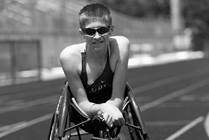
Condition
Shoulder Sprain
A shoulder sprain is a stretching or tearing of the Acromioclavicular (AC) ligament. This is located where your collar bone and shoulder meet, often called the AC joint.

Blog
Shoulder Injuries in Young Athletes
Shoulder injuries in young athletes are very common and can vary in cause and severity depending on each individual athlete’s training schedule and what sports they are playing.
Article
A Parent's Guide to Shoulder Injuries
Any student-athlete can experience a shoulder injury. Our free guide will teach you the signs and symptoms of shoulder injuries. You will also learn what to expect from treatment and recovery.
Sports Medicine: Shoulder Impingement Syndrome
Impingement syndrome is pain in the shoulder caused by pinching of the rotator cuff muscles beneath the edge of the shoulder blade (acromion).
Shoulder Injuries
The shoulder is made up of three bones: the scapula (shoulder blade), the humerus (upper arm bone), and the clavicle (collarbone). The head (or top) of the humerus rests in a socket of the scapula called the glenoid. A soft rim of tissue called the labrum lines this socket.
News
Shoulder Injuries in U.S. High School Athletes Occur More Often in Boys
Although shoulder injuries accounted for just 8 percent of all injuries sustained by high school athletes, shoulder injuries were relatively common in predominately male sports such as baseball (18 percent of all injuries), wrestling (18 percent) and football (12 percent).
Article
Swimming with a SICK Scapula (Shoulder Blade)
The shoulder joint and scapula work and move together to perform the overhead motions that occur in swimming. To perform the overhead motions in swimming correctly, swimmers need a lot of shoulder mobility and stability.
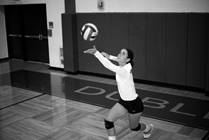
Blog
Shoulder Pain and Injuries in Volleyball Athletes
Whether your volleyball athlete is just starting their season or has been training year-round, shoulder pain is not normal and can hinder an athlete’s performance.
Article
Is Your Rotator Cuff A Sore Subject?
What exactly is the rotator cuff? The rotator cuff is a group of four muscles that form to hold parts of the shoulder together.
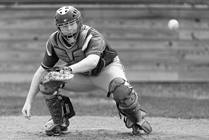
Condition
Rotator Cuff Tendonitis
Rotator Cuff Tendonitis is inflammation of the rotator cuff muscles tendons surrounding the shoulder joint.
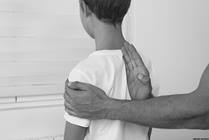
Blog
Poor Posture: Fixing It Before It Becomes a Problem
Our posture and alignment are extremely important to our bodies and how they work. If we slump forward, slouch and have our shoulders rounded forward these muscles will suffer.
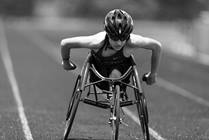
Blog
Shoulder Pain and Injury in the Adaptive Athlete
Based on the mechanics of adaptive sports, there is a much higher risk of upper extremity and shoulder injury in athletes with physical disabilities. The best strategy for combating these injuries is appropriate injury prevention strategies and training.
Article
Scapular Dyskinesis
For most people, the scapula moves in abnormal ways due to the repetitive use of the shoulder. These changes, though sometimes asymptomatic, can increase the chances of injury.
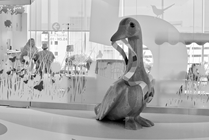
Condition
Facioscapulohumeral Muscular Dystrophy
Facioscapulohumeral muscular dystrophy, also known as Landouzy-Dejerine, causes severe weakness in muscles of the face, shoulders and back.
Article
Yoga for Period Pain
This Helping Hand™ explains how yoga can help with period pain and instructions for common yoga poses.
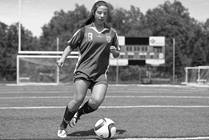
Condition
Bursitis
Bursitis is swelling or irritation of a bursa. A bursa is a fluid-filled sac that acts as a cushion between tendons, ligaments, bones, and skin.
Article
Exercises: Upper Extremities Infant (Passive)
Range of motion exercises help keep your baby's joints and muscles loose and easy to move. An exercise program is planned for each child’s needs.
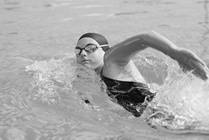
Article
Swimming Stroke Evaluations
Swimmers experiencing pain or other symptoms may benefit from a swimming stroke evaluation.

Blog
Hockey Injuries: Know the Risks
Hockey season is in full swing and the excitement for end of the season tournaments is just around the corner. For players, parents, and coaches alike, it is important to be aware of the most common injuries that can happen on the ice.

Blog
How to Choose the Right Backpack
With the summer quickly coming to an end, many of us are getting ready for the school year which means shopping for that school supply list. As your child oohs and ahs over backpacks featuring his or her favorite colors and characters, you should also look for a backpack that is safe for your child
Article
Brachial Plexus Injury
The brachial plexus is a group of nerves that starts in the spinal cord at the neck and controls the hand, wrist, elbow and shoulder. It can be injured during birth.

Blog
Winter Car Seat Safety
We all want to keep kids warm, but when kids wear a coat in their car seat, it often makes the harness too loose. Save the puffy coats for playgrounds and playing in the snow, and use these tips for staying warm and safe in the car.

Article
Throwing Evaluations
Softball and baseball athletes ages 10+ who suffer from pain or weakness during overhead throwing activities benefit from our throwing evaluations.

Condition
Newborn Clavicle Fractures
Clavicle (collar bone) fractures are the most common injury sustained by newborns during birth. Factors that may increase the risk for a clavicle fracture include the newborn being large in size, the newborn’s shoulder getting stuck during delivery, or the use of tools to assist with the delivery.
Article
Child Passenger Safety: Car Seats and Booster Seats
Ohio law requires that a child ride in a car seat (and then a booster seat when he has outgrown the car seat) until he is 8 years old, unless the child is 4 feet 9 inches tall. The exceptions are children who are 4 feet 9 inches or taller before they are 8 years old.

Blog
Remote Learning: 5 Tips for Maintaining a Healthy Posture
Many students are finding themselves learning in virtual classrooms for the first time. Although remote learning may have some perceived perks like sleeping in, self-paced learning and days off, it also comes with new challenges.

Condition
Emery-Dreifuss Muscular Dystrophy
Emery-Dreifuss muscular dystrophy is a rare form of MD that affects only males. Symptoms may begin in childhood or adolescence. The condition causes slowly progressive weakness in the muscles of the shoulders, upper arms, and lower legs and joint stiffness.
Limb-Girdle Muscular Dystrophy
Limb-Girdle muscular dystrophy affects males and females. Most commonly it causes progressive hip and shoulder muscle weakness that spreads to the arms, legs and back. Symptoms usually begin between ages 8 and 15 and progress slowly. Patients usually become confined to a wheelchair by age 30.
News
More than 10,000 Children Involved in School Bus Crashes Annually in Ohio
Each year in the United States, 25.5 million children travel an estimated 4.3 billion miles on school buses. New research findings by investigators in the Center for Injury Research and Policy (CIRP) at Columbus Children’s Hospital emphasize the large number of children involved in school bus
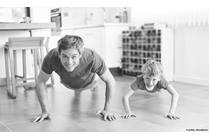
Blog
Winter Workout: Exercise During TV Commercials
As always, consult with your child’s physician before implementing any new exercise routine. How do you keep your family active throughout the winter? By encouraging them to step away from the couch or computer, and get moving during the commercials of their favorite TV show! Staying active
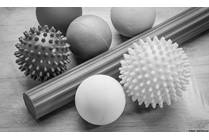
Blog
Rolling Techniques to Relieve Pain, Discomfort and Tension
Everyone has dealt with sore, tense or cramped muscles from time to time and as a physical therapist, I regularly see patients in our clinics who benefit from soft tissue work to help ease muscular tension and decrease pain.
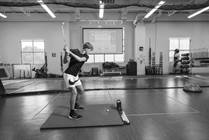
Article
Biomechanical Video Analysis
The purpose of the video analysis is to evaluate the mechanical deviations of the athlete from normal to identify improper stresses on the body that could predispose an athlete to injury or delay the healing process.
Article
Exercises: Breathing, Posture and Chest Mobility
The following exercises will improve your posture (the way you stand). They will also make the muscles of your chest stronger and more flexible so that breathing is easier. Do each exercise 5 times.

Blog
Throwing Guidelines for Baseball Players
From that 1st pitch to a throw from outfield to home plate, throwing is a big part of baseball. Shoulder and elbow growth plate injuries are common in young athletes who play a high volume of games each season and throughout the year. Here are 9 tips for preventing injuries.
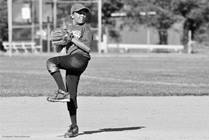
Blog
Using Video Analysis to Prevent Throwing Injuries
There are many parts to any athletic movement, and they all affect one another in a chain reaction. These are just a few of the common biomechanical issues we see and can correct. We use Video Analysis for numerous sports, including baseball, softball, volleyball, running and swimming. Athletic Trainers are experts in biomechanics and this tool helps us do even more for our young athletes.
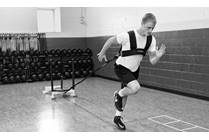
Blog
Why Your Child Should Be Strength Training This Summer
While it may seem like winter just ended, fall sports are just around the corner and athletes are starting to think about gaining the strength they need for a successful season. Strength training not only enhances athletic performance but also plays a crucial role in reducing the risk of injuries.
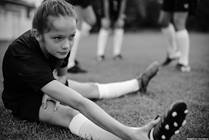
Blog
Apophysitis: Why Children Shouldn’t Play Through Pain
Apophysitis is an inflammation or stress injury to the areas on or around growth plates in children and adolescents. Apophysitis is usually caused by repetitive overuse activities like running, jumping, and throwing but can also occur as an acute injury with a fall or rapid, powerful movement.

Blog
Core Stability: What Is It and Why Is It Important?
Having a strong, stable core helps us to prevent injuries and allows us to perform at our best. Read expert tips on how to help your child strengthen theirs.
Clavicle Fracture
A clavicle fracture is common in children after a collision or fall onto the shoulder. Most clavicle fractures that occur in children can be treated without surgery.

Blog
Using a Booster Seat Until a Seat Belt Fits
Depending on age, weight and height, children need to be in car seats, booster seats, or seat belts every time they are in the car. We all know to put a newborn in a rear-facing car seat, but how long should older kids stay in a booster seat?

Blog
Car Seat Conundrums – You Asked, We Answered
We asked for your car seat questions on Facebook and you delivered! Here are the answers to some of your questions. Does my really tall 7 year old need to sit in a booster? Laws vary from state to state, but here in Ohio a child must sit in a booster until they are 8 or 4’9.” So,
Article
Football Equipment Fitting
Inspect all equipment before issuing to an athlete. Equipment should be checked daily for damaged parts, fit and wear and tear. Always follow the manufacturer’s instructions for fitting equipment.

Condition
Macromastia
Macromastia refers to enlarged breasts in females. This condition may cause back and neck pain, as well as rashes and limitations with daily activities. In those situations, breast reduction surgery may be beneficial.

Specialty
Sports Medicine
7640 W. Sylvania Ave.
Suite E
Sylvania, OH, 43560
(419) 251-2061
Click to learn more.

Blog
Brachial Plexus: What You Need to Know About This Childbirth Complication
Each year during the delivery process, about one out of 1,000 babies sustain injury to a network of nerves in their neck called the brachial plexus. Here are the most common questions the experts at our Brachial Plexus Program hear from parents.
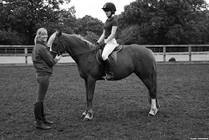
Blog
Back in the Saddle: Injuries in the Equestrian Athlete
Whether you are mounted or unmounted, injuries from riding horses can range from mild to life threatening. Serious injuries can occur when a rider is thrown, trampled, kicked, or dragged and any time a rider experiences a serious injury, he or she should seek medical care immediately.
Article
Exercises: Left Torticollis Positioning for Play
Left torticollis (tor ti COLL iss) is a tightening of the muscles on the left side of the neck. It results in your child often bending his or her head to the left side and looking to the right side. Your child may not be able to easily turn his or her head to the left due to the muscle tightness.
Article
Exercises: Right Torticollis Positioning for Play
Right torticollis is a tightening of the muscles on the right side of the neck. It results in your child frequently bending his or her head to the right side and looking to the left side.
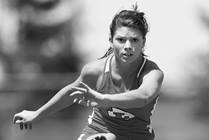
Condition
Sports Medicine: Cervical Strain and Sprain
A cervical strain or sprain is an injury to the muscles or ligaments in the back of the neck.
Article
Exercises: Arms and Hands (Passive)
Range of motion exercises keep your child's joints and muscles loose and easy to move. Your child should lie on his or her back on a firm surface while doing the exercises. You should be on the same side of his body as the arm you are working with. Motions should be smooth, not bouncy.
Article
Let's Play Ball
Coaches and parents of young baseball players, or any athlete in a throwing sport, often have questions about throwing injuries and how to prevent them.
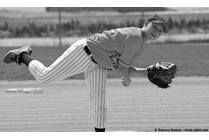
Blog
Injury Prevention in Softball and Baseball
Throwing injuries can put limitations on the ability of some athletes to continue playing their sport. Throwing and pitching require repetitive, explosive body movements to be executed with precision and athletes perform these motions thousands of times in a season.
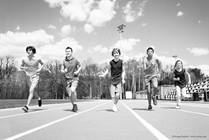
Blog
The Importance of Proper Running Form for Young Athletes
Much like teaching a young golfer the proper swing technique, young runners should be guided to develop good running form from the start. Doing so not only keeps their joints healthy, but it also improves their overall performance.
Article
Breaking Stride
Fractures and dislocations are two of the more serious types of injuries that can occur during an athletic event. Early recognition and prompt medical treatment are extremely important with these injuries in athletes.
Article
High School RIO™ Press Releases
To view or print any of the High School RIO™ press releases, click on the title. New National Study Examines Concussion Management in High School Sports - December 1, 2010 Football Injuries in U.S.
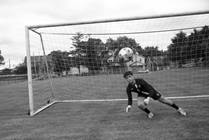
Condition
Biceps Tendonitis and Tenosynovitis (Distal)
Distal biceps tendonitis is pain at the front of the elbow and upper arm caused by inflammation (swelling) of the biceps tendon. Tenosynovitis is inflammation of the tendon sheath that surrounds the biceps tendon.
Scheuermann's Disease
Scheuermann’s disease is a condition of the mid-back related to the shape of the vertebrae and the curve of the spinal column. Normally, vertebrae are about the same size and rectangular-shaped. With Scheuermann’s disease, the vertebrae become wedge-shaped and a person’s posture may change.
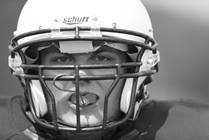
Article
Football Injuries
Football safety equipment should include a helmet with a NOCSAE seal, mouth guards, shoulder pads, football pants with pads, and football shoes with cleats.
Article
Exercises: Upper Extremities (Active)
Active exercises help keep your joints and muscles from tightening up and becoming weaker. Your exercise program is planned for your specific needs because not all your muscles have the same degree of strength or weakness. The goal of active exercise is to keep your muscles strong and flexible.

Blog
The Importance of Tummy Time
As a new parent, you’ve probably heard the term “tummy time” and been told it is an important part of your baby’s development.

Blog
Teens and Seatbelts: 3 Tips to Keep Everyone Safe
Safety on the road begins with wearing your seatbelt properly. Parents who educate themselves on the best practices of seatbelt use can set a better example for their children.
News
Ohio Booster Seat Law Violations Now Subject to Fines
In a move to reduce the number of pediatric injuries and deaths from motor vehicle crashes, Ohio became the 44th state in the United States to enact a Booster Seat Law in October of 2009.

Blog
How to Squat Safely: Correct Form for Maximum Effectiveness
One of the most effective exercises is the squat, but when done incorrectly squatting can lead to many issues inside and outside of the weight room.
Article
Exercises: Stretching
Stretching exercises help keep your joints and muscles from tightening up. Your exercise program is planned for your specific needs because not all your muscles have the same degree of strength or weakness.
Article
Strength Training with a Limited Budget
There are some simple ways to perform light strength training at home with everyday objects that can be used for resistance.

Condition
Brachial Plexus
The brachial plexus is a bundle of nerves that separates into the major nerves that supply movement and touch function to the arm.

Behavioral Health MFT Internship Program
Nationwide Children’s Hospital offers a one-year Behavioral Health MFT Trainee Practicum and Internship Program for MFT Trainees pursing licensure and child and adolescent behavioral/mental health training.
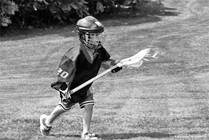
Blog
Lacrosse Safety Tips
From helmets to mouthguards, lacrosse requires specific gear to keep players safe. But did you know the equipment differs for boys’ and girls’ lacrosse? Whether you're just starting or already on the field, this guide breaks down everything you need to know about staying safe and protected while enjoying the fast-paced action of the game
Article
Tummy Time
It is important for babies to sleep on their backs to reduce the risk of Sudden Infant Death Syndrome (SIDS). However, a baby needs time on his or her tummy for stretching and strengthening his back and neck muscles.

Condition
Tongue Tie
Tongue tie, or ankyloglossia, is a condition in which your child’s tongue is tethered to the floor of the mouth by a band (lingual frenulum). While up to 10 percent of children can have some degree of tongue tie, not all children with tongue tie require intervention.

Blog
Non-compliant Car Seats
The biggest risk of using a non-compliant car seat is that it may not work well in a crash, and your child may get injured as a result. Also, the seat may not meet other safety standards, like those regarding flammability, lead content, or entrapment and strangulation risks
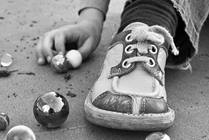
Condition
Hereditary Multiple Osteochondromas
Hereditary multiple osteochondromas (HMO) is a rare genetic disorder. Children develop non-cancerous (benign) bone tumors called osteochondromas. Knees, shoulders, ankles and wrists are the most common sites for osteochondromas.
Article
Osteochondritis Dissecans
Osteochondritis dissecans is an injury or condition affecting a surface of the joint that involves separation of a segment of cartilage and the underlying bone. This can occur in any joint, it is most common in the knee, followed by the ankle, elbow and shoulder.
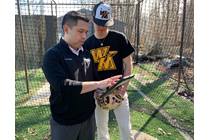
News
Nationwide Children’s Hospital Sports Medicine Provides Specialized Baseball Performance Training to Help Prevent Common Injuries
Because many of the most common baseball arm injuries are preventable, experts at Nationwide Children’s Hospital Sports Medicine have designed a unique baseball performance-training program for all skill levels to help address the majority of injuries caused by overuse and improper throwing technique.
News
Gene Therapy For Muscular Dystrophy Shows Promise Beyond Safety
Researchers have cleared a safety hurdle in efforts to develop a gene therapy for a form of muscular dystrophy that disables patients by gradually weakening muscles near the hips and shoulders.

Article
Child Passenger Safety
Car crashes are the #1 cause of death among children in the US. Depending on age, weight and height, children need to be in car seats, booster seats, or seat belts every time they are in the car.

Condition
Jaw Abnormalities
Jaw abnormalities affect the bite and appearance of patients. These may be due to a cleft lip and palate, or other causes. Learn more today.
Pavlik Harness
Does your child wear a pavlik harness? This Helping Hand can aid you in day to day activities with your child in a pavlik harness.
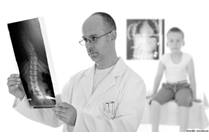
Blog
Scoliosis: Is the Curve in Your Child's Spine Normal?
Scoliosis is defined as curvature in the spine greater than 10 degrees. Scoliosis is a relatively common condition that causes the spine to curve and rotate into a C or S shape instead of a straight line.

Article
Sleep Education
Read about our helpful tips and information to help your child get a restful night's sleep.
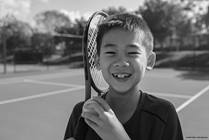
Article
Sports Medicine Resources for Tennis
Here are some helpful ways to keep your body in its best shape to play tennis.

Specialty
Body Imaging
Our body imaging team is specifically trained in diagnosing diseases and disorders of the chest, abdomen, pelvis, and gastrointestinal tracts using the latest CT and MR technologies in the safest way possible.
Article
Stocking a Medical Kit
A well-stocked medical kit can make all the difference when caring for injuries both at home or on the field.

Article
Ice Hockey
Ice hockey is a popular winter sport in the United States. However, there are more than 20,000 ice hockey-related injuries seen in U.S. emergency departments each year.
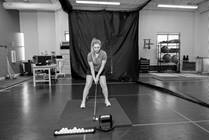
Article
Golf Medicine Program
Nationwide Children’s Hospital Golf Medicine Program has a team of Titleist Performance Institute (TPI) certified professionals to treat the young golfer.
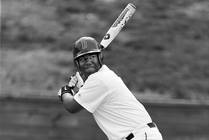
Condition
Sports Medicine: Kyphosis and Lordosis
Kyphosis and lordosis refer to the natural curves of the spine in the mid-back and low back. Sometimes these curves can be larger than normal which can lead to pain.
Article
Exercises: Lower Extremities (Active)
Active exercises help keep your joints and muscles from tightening up and becoming weaker. Your exercise program is planned for your specific needs because not all your muscles have the same degree of strength or weakness. The goal of active exercise is to keep your muscles strong and flexible.

Condition
Scoliosis
Scoliosis (skoe-lee-OH-sis) is a deformity of the spine which results in a rotation and curve of the spine.
Article
Pitch Counts and Throwing Injury Prevention
Pitch counts are a set number of pitches that a player is allowed to throw in a given game or week. They are an important tool to prevent overuse injury for youth baseball players. Learn more about pitch counts and throwing injury prevention.
Seizures: Infantile Spasms
Infantile spasms are seizures that often cause a delay in development. This means that your child may not have the same skills or behave the way other infants do at the same age. It is important to start treatment as soon as possible.

Condition
Arthrogryposis
Arthrogryposis, also called arthrogryposis multiplex congenita (AMC), involves a variety of non-progressive conditions that are characterized by multiple joint contractures (stiffness) and involves muscle weakness found throughout the body at birth.

Article
Sleep in Preschoolers
Sleep problems are common during the preschool years, including nighttime fears and nightmares.

Article
Sleep in School-Aged Children
School-aged children need between 10 and 11 hours of sleep per night.

Article
Sleep Tips for Children
The following recommendations will help your child get the best sleep possible.

Article
Diving Safety
More than 6,500 children and adolescents are treated for diving-related injuries annually. The leading cause of youth diving injuries is collision with the diving board or platform.
News
FSH Society Fellowship Funds Facioscapulohumeral Muscular Dystrophy Research
Funding from the Facioscapulohumeral Muscular Dystrophy Society FSH Society, Inc. will help researchers determine the role a seldom-studied gene plays in the development and progression of facioscapulohumeral muscular dystrophy (FSHD), a debilitating muscular dystrophy often originating in the

Blog
7 Tips for Tree House Safety
Tree houses bring childhood dreams to life, but safety should never take a backseat. Discover essential tips to build a secure, adventure-ready space where kids can play with confidence.

Blog
Massage Therapy for Sports Injuries
In the event that one of your young stars is already suffering from an injury, massage can be beneficial in facilitating a speedy recovery.
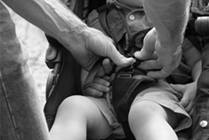
Article
Strollers
Although strollers are typically used to safely transport children, on average, one child aged 5 years and younger is treated in U.S. hospitals every 45 minutes for a stroller- related injury.
Article
Management and Treatment of Neuromuscular Scoliosis in Spina Bifida
The spine helps keep us upright when we are sitting and walking. When a person who has spina bifida also has scoliosis, or spinal asymmetry, the spine is not straight. It may be because of curvature or twisting of the spine, usually in an "S" or "C" shape. This can progress over time.

Article
Comfort Hold Techniques
These comfort hold techniques have been developed to help you hold your child during a procedure. The purpose of a hold is for your child to feel safe and to help him or her keep still and calm.
Lateral Malleolus Avulsion Fractures
Avulsion fractures are breaks or splits in the bone.
Mid-Back Strain
A mid-back strain is an injury to the muscles and ligaments of the middle back that attach to the ribs, chest wall and the thoracic spine.

Article
Sleep in Toddlers
Many toddlers continue to awaken during the night, usually as a result of poor sleep habits.

Pediatric Sports Medicine Athletic Training Internship
This Athletic Training Internship and Immersion has been created to prepare college students who are currently enrolled in a CAATE accredited athletic training program for the various roles an athletic trainer may have in the outreach and clinical settings.
Article
Prepare for Your Sports Medicine Visit
How you can prepare for your visit at the Sports Medicine clinic at Nationwide Children's Hospital.
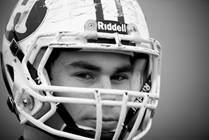
Blog
Spleen Injuries in Sports - What Parents Need to Know
Although rare, splenic rupture is the most frequent cause of death due to abdominal injury in sports. It occurs most commonly from direct trauma to, or a fall onto, the left side of the lower chest wall or abdomen.

Blog
Tips and Tricks for Swallowing Pills and Liquid Medications
We know that taking medication can sometimes be a challenge. Here are a few suggestions that our Child Life Specialists have found to be helpful for both pills and liquid medication.

Blog
Cupping Therapy: Does it Improve Athletic Abilities?
Although cupping is seen more often in the athletic world, physical therapists are using it more and more in the general population to assist with improving a patient’s daily function and pain.

Blog
Why Crawling is Important for Your Baby
Crawling provides many great experiences for your child and helps develop and strengthen other areas. If you haven’t noticed your child beginning to creep or crawl by nine months, it may be time to follow up with your pediatrician or a physical therapist.

Article
Family Resource Center
The Family Resource Center was designed by families and professionals to support patients and families during their time at Nationwide Children's Hospital, both inpatient and outpatient.

Specialty
Neuromuscular Disorders
Groundbreaking. Multidisciplinary. Comprehensive. These words don’t just describe our world-class Neuromuscular Disorders program. They are fundamental to our work and the commitment we make to the families who come to us from across the country.
Supracondylar Humerus Fracture
When your child’s humerus bone is fractured near the elbow area, just above the joint it is called a supracondylar humerus fracture.

Condition
Lymphatic Malformation
A lymphatic malformation is the result of abnormal formation and development during fetal development of the otherwise normal lymphatic vessels in the body. This is usually in one area of the body: neck, chest, abdomen and extremities.
Scoliosis
Scoliosis is a condition where there is an abnormal curve of the spine. Most cases are idiopathic, meaning there is no known cause. However, some cases are related to neurological conditions or seen in children with birth defects.
Article
Stretching for Swimmers
Stretching is an important part of fitness that is often overlooked. A good stretching routine for swimmers can help decrease muscle injuries and improve performance.

Article
Baseball-Related Injury
While baseball is a great way for people of all ages to get out and get some exercise, injuries can and do occur. Taking a few precautions will help reduce the chance of injury.

Article
Back-to-School Safety
When summer comes to an end, children get ready to go back to school. This is a great time for parents to talk to their kids about how to safely travel to and from school.
News
High School Football, Wrestling Athletes Suffer Highest Rate of Severe Injuries
High school football and wrestling athletes experienced the highest rate of severe injuries, according to the first study to examine severe injuries – injuries that caused high school athletes to miss more than 21 days of sport participation among a nationally representative sample of high
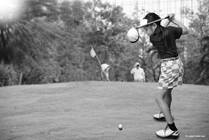
Blog
What is Golf Medicine?
Whether you and your child play golf to relax on the weekends or to be competitive, a risk of injury exists just like in other sports. It is important to take precautions against getting hurt and to seek medical attention in the case of injury.

Blog
Common Breast Disorders in Adolescents
Adolescence can be a challenging time for teenagers. During that time, their bodies grow and change. One common area of change in teenagers is the chest area. These changes may include macromastia, asymmetric breasts or gynecomastia.
News
Dr. Maya Spaeth Joins Nationwide Childrens Hospital Plastic Surgery Team and Brings New Service to Program
Maya Spaeth, MD, joined Nationwide Children’s Hospital in September as co-director of the Hand, Microsurgery and Brachial Plexus Program within the section of Plastic Surgery.
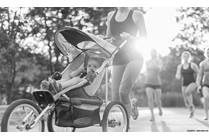
Blog
Choosing a Stroller: Best Tips to Keep Your Child Safe
Parents with young children have so many decisions to make and so many pieces of “equipment” to get. One of the bigger decisions is choosing a stroller that fits both your baby and your family’s lifestyle. There are many different options out there and it can get overwhelming.

Article
Tree House Safety
Building and playing in tree houses is a favorite activity for young children. Though a tree house can be a place of great fun and imagination, unfortunately it can also lead to serious injury.
News
RNA Interference May Provide the First Therapy for Facioscapulohumeral Muscular Dystrophy
Scientists may one day be able to treat the third most common muscular dystrophy, facioscapulohumeral muscular dystrophy (FSHD), by taking advantage of a system within living cells that helps control gene activation.
Article
Replacing Missing Genes
Duchenne muscular dystrophy (DMD) is the most common life-threatening childhood form of muscular dystrophy. It is characterized by progressive weakness and degeneration of skeletal muscles and caused by a mutation in the dystrophin gene.

Blog
Safety Tips for Cheerleaders: Preventing Overuse Injuries
Because of the nature of practices, cheerleaders tend to see injuries similar to what dancers get. In this way, cheer athletes really should take care of, and prepare, their bodies for practice as a dancer would.

Blog
Digital Eye Strain in Kids
Digital Eye Strain has been reported as far back as the early days of personal computers, but its incidence is increasing at an alarming rate as our society's dependence on screens is being fueled by both technological advancements and once-in-a-lifetime events.

Blog
How to Improve Your Child's Golf Game with Strength Training
A well-rounded strength program helps improve overall performance, supports injury prevention, and builds the muscle and stamina needed for any sport. When it comes to young golfers, strengthening the body’s core, hips and torso is vital.

Blog
Universal Newborn Hearing Screening
Before babies are born, they use their hearing to listen to the sounds around them. Listening specifically to speech and language sounds in the first few months of their life is what prepares babies to speak.

Article
Finding Financial Peace of Mind
Thanks to 614 File Free and the matched savings program, Sade had the opportunity to make good financial choices for her family, for both the short- and long-term.

Specialty
Sleep Disorder Center
Our Sleep Disorder Center and our Sleep Medicine Clinics assist primary care physicians and specialists with the diagnosis and treatment of sleep disorders in children from infancy to adolescence.

Specialty
Occupational Therapy
Occupational Therapy focuses on facilitating development, enhancing function and maximizing independence in all daily life activities.

Condition
Phimosis
Phimosis is a condition of the male foreskin where the skin is tight and unable to retract back behind the head of the penis. This condition is completely normal and physiologic in most baby boys whose penis is otherwise without abnormalities.

Blog
4 Ways to Encourage Motor Development in Baby's First Year
Within the first year of life, your baby will develop critical motor skills that help them make small movements, hold up their head, sit up-right, crawl and eventually walk. As a caregiver, there are many things you can do to encourage them reach these milestones.

Blog
Migraine and Tension Headaches: Using Massage to Ease the Pain
Raise your hand if you enjoy having a headache. Silly, right? Nobody likes the pain, frustration, and lost time a headache can bring. Yet many of us suffer from them, including your children. The National Headache Foundation reports that 1 in 5 US children ages 5-17 are prone to headaches.
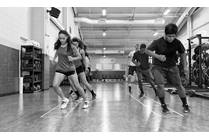
Blog
Is Strength Training Safe for Kids?
The safety and effectiveness of children participating in strength training has previously been a source of great debate. However, despite previous misconceptions there is now evidence supporting strength training by pre-adolescent and adolescent children and its acceptance by medical and fitness

Blog
Breast Reduction Surgery: When Is It Necessary for a Young Woman?
Breast size can be affected by weight fluctuations, so it is important to be at a stable, healthy weight for at least six months to one year prior to considering surgery.
Article
24-Hour Holter Monitor
What to expect if your child is going to wear a Holter Monitor for a 24-hour test.
News
New National Study Finds Mountain Bike-Related Injuries Down 56 Percent
Mountain biking, also known as off-road biking, is a great way to stay physically active while enjoying nature and exploring the outdoors. The good news is that mountain biking-related injuries have decreased.

Specialty
Brachial Plexus and Nerve Program
The brachial plexus is a network of nerves that controls the arm, shoulder and hand function. Injury during birth, or later trauma, can leave the arm without feeling or movement. Surgery may be necessary. Our experts are ready to evaluate, educate and provide appropriate interventions.

Condition
Osteosarcoma
Osteosarcoma is the most common form of bone cancer in young people under age 20. Tumors are lumps or masses and usually affects the long bones near the knee or the shoulder.
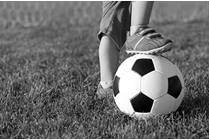
Blog
Resources for Kids with Special Needs
As a pediatrician taking care of many kids with special needs, I realized early on that I wanted to help parents not only with their health care needs, but also with their unique needs that extended way beyond the four walls of the hospital.

Blog
Stranger Danger
We interrupt this regularly-scheduled blog for an important safety reminder: Strangers may be dangerous! It’s a nightmare scenario for parents. Your child doesn’t arrive home from school at the expected time, or you turn away for a moment—on the playground or at the shopping
Article
Bottle Feeding
Feeding your baby can be a happy time for you and your baby. If you feel calm and relaxed during the feeding, so will your baby. Newborn infants need to be fed every 2 to 4 hours. As your baby gets older, he or she will be able to go 4 to 6 hours between feedings.
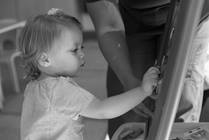
Article
Infantile Spasms Program
The Infantile Spasms Program works to treat spasms are seizures commonly associated with West syndrome, a severe infantile epileptic encephalopathy often accompanied by poor developmental outcomes.
Osteosarcoma
Osteosarcoma is a cancer of the bone. It starts in immature bone cells that normally form new bone tissue.

Article
Sleep Apnea CPAP
Obstructive Sleep Apnea is a medical problem in which a person’s air flow is blocked only during sleep.
Article
Sports Medicine FAQs
What is the best way to stay hydrated? When do I use ice? These are just some of our most frequently asked questions.
Article
Cheerleading Injuries: Risk Factors and Prevention Tips
Competitive cheerleading involves a great deal of tumbling and stunting activities. The repetitive tumbling routines place a great deal of pressure on the spine and can result in stress fractures.
News
Nationwide Childrens Hospital Opens Second Sports Medicine and Orthopedic Center
Nationwide Children’s Hospital has opened its second, free-standing Sports Medicine and Orthopedic Center in central Ohio. Located in Dublin, Ohio, the Dublin Sports Medicine and Orthopedic Center offers services including sports medicine, orthopedics, sports and orthopedic physical therapy,
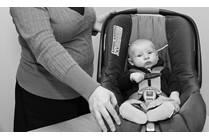
Blog
Newborn Car Seat Safety - What You Need to Know
The birth of a child is one of the most exciting, anticipated and memorable moments for a mother and family. The preparation beforehand, baby showers and packing for the hospital all add to the excitement and anticipation.

Article
Healthy Sleep Habits for Babies and Toddlers
Sleep is important at all ages. Newborns do not know day from night, so they sleep and wake up at all times. Toddler sleep may vary too. This can be hard for parents.
Article
Conditions and Symptoms
Read our comprehensive list of conditions that we treat and common symptoms of these conditions.

Condition
Hypermobile Joints
Hypermobile joints, also known as loose joints, describes the ability of a joint to move beyond its normal range of motion. People with hypermobile joints are sometimes referred to as being double jointed. Benign hypermobility syndrome can lead to weak, loose ligaments and joint instability.
Ringworm of the Scalp (Tinea Capitis)
Tinea capitis (TIN-ee-uh CAP-i-tis) is an infection of the scalp which is caused by a fungus. It is also called ringworm.

Article
Nightwakings
Nightwakings in young children is one of the most common problems parents face.
Article
Cardiopulmonary Resuscitation (CPR): Puberty to Adult
This Helping Hand™ is a guide to general CPR for children that have gone through puberty and adults. It is not intended to be used as training material or in place of formal CPR training.
News
Regional Anesthesia for Pediatric Knee Surgery Reduces Pain, Speeds Recovery
A recent study of an ultrasound-guided regional anesthesia technique, called femoral nerve block, shows that it leads to less opioid use and allows the majority of patients to go home within hours of surgery.
Article
Swelling: The Body's Reaction to Injury
Swelling is a normal reaction of the body to an injury. Sometimes, though, the body goes overboard, and the inflammatory response is excessive and can actually begin to cause more damage than good.

Article
South Side Santa
Most people admit they need at least a little help getting through the chaos and craziness of the winter holiday season. But ask Dessaree Watters how much help she needs and her answer might surprise you.

Research at Nationwide Children's
The Abigail Wexner Research Institute at Nationwide Children's Hospital is seeking answers on behalf of children in Columbus and around the world. Our thirteen multidisciplinary Centers of Emphasis span the spectrum of research important to pediatric health. Our common goal is discovery and innovation that improves the health and quality of life for children and their families.
News
National Study Evaluates Playground Equipment-Related Injuries
Schools have opened their doors this fall and the sounds of children echo from surrounding playgrounds. While children’s activities on playgrounds can benefit their psychosocial and physical development as well as combat problems such as childhood obesity, these activities are not risk-free.
Article
RIO™ Publications
The following is a list of peer-review scientific manuscripts based on data from the National High School Sports Injury Surveillance System for the 2005-06, 2006-07 and 2007-08 academic years data. Kerr ZY, Casa DJ, Marshall SW, and Comstock RD.
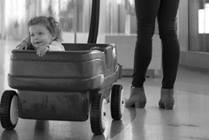
Condition
Neuromuscular Disorders
Patients benefit from coordinated care from specialists, all with expertise in pediatric neuromuscular disorders.
Article
Resources at Home
We want to help you take care of your baby once he/she is discharged. These resources cover everything from fevers to colic.
News
Study Finds Average of Two Injuries Every Hour in the U.S. from Strollers and Carriers
Although strollers and carriers are typically used to safely transport children, injuries do occur while using these products. Astudy conducted by the Center for Injury Research and Policy of the Research Institute at Nationwide Children’s Hospital found that, over a 21-year period from 1990
Article
Birth Control: Contraceptive Patch
Learn about the birth control option for women, the contraceptive patch.
Article
Cardiopulmonary Resuscitation (CPR): Age 1 to Puberty
This Helping Hand™ is a guide to general CPR for children that are over 1 year old and have not gone through puberty. It is not intended to be used as training material or in place of formal CPR training.
Article
Gynecologic Laparoscopy
This Helping Hand™ is about the gynecologic laparoscopy procedure and why it's done.
Article
Fine Needle Aspiration (FNA) Thyroid Biopsy
The doctor has seen or felt a nodule or bump on your child’s thyroid. The ultrasound confirmed the presence of a nodule. Now it is time to take some fluid from inside the nodule and get it tested.
News
Study Finds Average of Two Injuries Every Hour in the U.S. from Strollers and Carriers
Although strollers and carriers are typically used to safely transport children, injuries do occur while using these products. A study conducted by the Center for Injury Research and Policy of the Research Institute at Nationwide Children’s Hospital found that, over a 21-year period from 1990

Condition
Migraines
To be diagnosed with migraines, a child needs to have at least five headaches that meet certain criteria: pain that is moderate to severe, pain that is one-sided (unilateral) or on both sides of the head (bilateral), sensitivity to light and sound, and nausea that may or may not lead to vomiting.
Femoroacetabular Impingement
Femoroacetabular impingement (FAI) is a condition where extra bone grows on the bone(s) within the hip joint.

Article
Bedtime Problems
Getting a child to go to bed is a common problem that many parents experience.

Article
Sleep in Infants (2-12 Months)
Infants sleep between 9 and 12 hours during the night and nap between 2 and 5 hours during the day.
Article
Spinal Fusion
Does your child have scoliosis? Learn more about a spinal fusion to correct the spine.

Blog
Gastroesophageal Reflux (GERD): What Is It, and What Can Be Done?
The most common symptom of GERD in infants is spitting up or vomiting, which is often forceful and followed or preceded by crying. Pain from esophageal irritation can cause difficulty in eating or refusal to eat altogether, along with crankiness during feeding.
